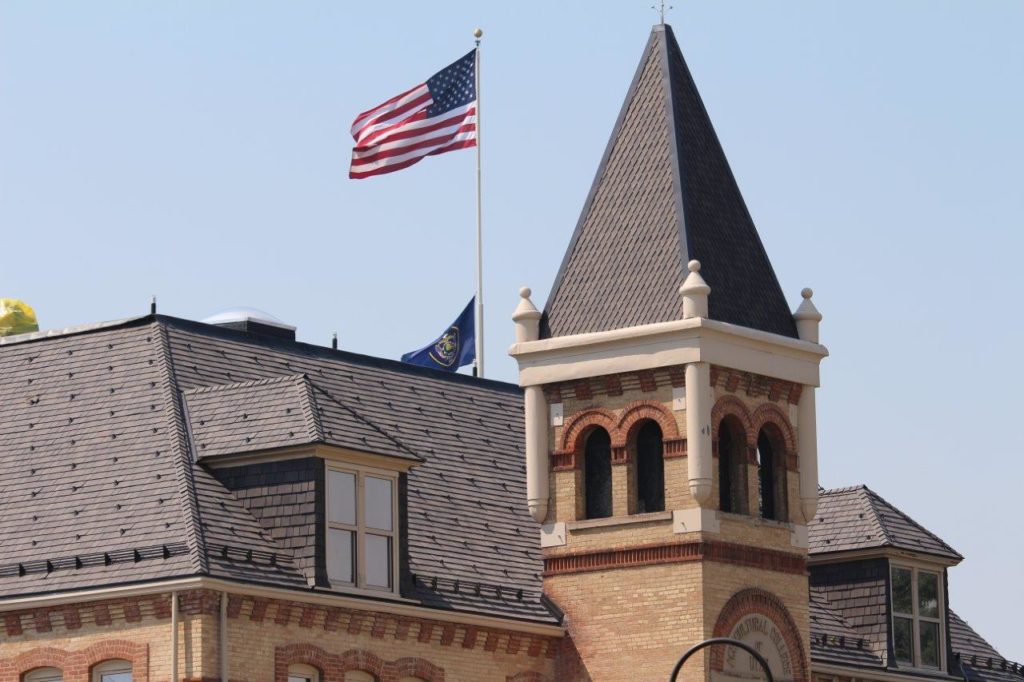How to Work with Historical Groups to Get Composite Roofing Approved for Your Project
How to Work with Historical Groups to Get Composite Roofing Approved for Your Project
Throughout America, there are historical groups, boards, societies and associations dedicated to preserving historic homes and sites. If you own a house or building in a historically-designated area, and need a new roof, it can be a challenge.
“The goal of a historical society is to preserve the character of the neighborhood,” says John Hogan, president at Blue Nail Roofing & Siding in New Jersey. “More than anything, that means the aesthetic look of the property.”
Fortunately, DaVinci composite shake and slate tiles have a truly authentic look. That’s what has enabled them to be accepted by some very strong-minded historical groups.
In New Jersey, where real slate is popular on historic homes, Hogan and her team often explain that composite slate is a lower cost option. In addition, it weighs far less than natural slate.
“For presentations to historical committees, we bring samples of DaVinci slate tiles and display them right next to traditional slate,” says Hogan. “It’s difficult to tell the difference. That’s where it allows us to open up conversations about the advantages of using composite material. If the final product is going to look the same, then why not take advantage of the lower cost, maintenance-free composite option?”
Know What You’re Up Against
In Wisconsin, roofer Randy Miller has also gone up against historical groups in the past. For one recent project re-roofing a Frank Lloyd Wright home, his company gained permission to use DaVinci Single-Width Shake tiles.
“There’s a big difference between a house that’s on a historic registry versus being located in a restrictive historical neighborhood,” says Miller, owner of Allrite Home & Remodeling out of Milwaukee. “National and state historic registries have very little wiggle room for product substitutions. Generally the products and colors are specified and cannot be changed.
“However, if you’re working in a restrictive neighborhood, there is more leeway. In these areas, once we show the DaVinci product, the decision makers are interested. They see the authentic look. Then, when we tell them about the longevity of the composite roofs, potential insurance discounts and resistance to impact and fire, they’re definitely moved.”
Prepare for Presentations
According to Miller, it’s important to consider two questions when seeking a variance for composite roofing. First, what is the review committee trying to accomplish with their rules. Then, what is their objection to alternative products.
“We consistently find that when we take time to explain the advantages of composite roofing, decision-makers in restrictive neighborhoods change their minds,” says Miller. “Here’s our best advice. Take time. Explain the product to the committee. Bring pictures of DaVinci shingles on other historic projects. Share historical case studies from DaVinci. This kind of approach has worked for us almost every time.”
Do Your Homework
When looking for “ammunition” to meet with historical or restrictive review boards, you’ll find exactly what you need on the DaVinci website.
Under our website’s “Project Profile” section, we have more than 50 historic projects. These range from an 1840 home in York, Pennsylvania to the historic 1884 Garvey-Viehl-Kelley house in Fort Worth, Texas. In addition, for commercial projects, we have DaVinci roofs on a lighthouse built in 1838, a multitude of historic churches, a 1760s haunted tavern, and on three structures at Utah State University.

Quin Whitaker, a structural engineer and product manager at Utah State University, advises you to involve the local historical society early in the product request process.
For the university’s Old Main project (the flagship 1889 building on campus), the historical society was hesitant to allow DaVinci composite roofing. The representative had a fixed idea that composite materials won’t hold up over the long term.
“We actually got lucky,” says Whitaker. “We had done our homework previously when our 100-year-old Geology building needed a new roof. Our team used DaVinci shakes on that structure and they worked out great.
“So, when the State Historical Department of Utah’s historical rep came to visit us for the Old Main project, we presented him with a number of options, including the DaVinci shingles. He said he didn’t like them, mostly because of the color concerns. Then we walked him across campus to the Geology building. He loved the DaVinci roofing and gave us his approval!”
In other words, take time to educate your audience on composite roofing. After that, come prepared with samples, testimonials and details on the product. With those tools in hand, you should be able to get composite roofing approved for your home or project.
The post How to Work with Historical Groups to Get Composite Roofing Approved for Your Project appeared first on DaVinci Roofscapes.
from Blog – DaVinci Roofscapes https://ift.tt/3i26j5Q
via IFTTT
Comments
Post a Comment